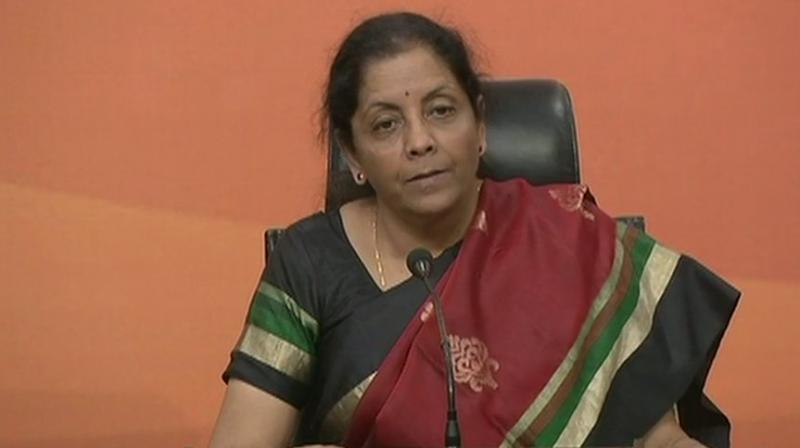India-Pak ties can get worse

The current stand-off between India and Pakistan is highly troublesome, and needs to be stopped — at once. For, it is accompanied by gruesome violations of the ceasefire on the Line of Control in Kashmir as well as the International Working Border. The language used in the verbal spat itself is menacing enough. Things can get out of hand.
On February 12, India’s defence minister Nirmala Sitharaman said, “I wouldn’t certainly set a timeline (for action against Pakistan). But will say this; Pakistan will pay for this misadventure. I repeat; Pakistan will pay for it.” She was referring to a militant attack two days prior at the Sunjuwan military station in Jammu, in which five soldiers and one civilian were killed, and 11 persons including an Army major were injured.
The very next day, Pakistan’s defence minister Khurram Dastgir warned, “Any Indian aggression, strategic miscalculation or misadventure, regardless of its scale, mode or location, will not go unpunished and shall be met with an equal and proportionate response.” The precision in the language reflects deliberation. Home minister Rajnath Singh and Indian Army Chief Gen. Bipin Rawat are as belligerent.
The home minister said on January 21, “India’s image in the world has become that of a strong nation and we have given a strong message to the world that we can attack our enemies not only on our soil, but also in their territory.” A few days earlier, Gen. Rawat said, “If we will have to really confront the Pakistanis, and a task is given to us, we are not going to say we cannot cross the border because they have nuclear weapons. We will have to call their nuclear bluff.”
This is a reckless charter. True, neither the United States nor the European Union is as involved in South Asia as it was 15 years ago, when they issued a joint statement in March 2003 laying down a programme for a ceasefire followed by a summit; hence the ceasefire understanding in November 2003.
It is easy to begin an armed conflict of whatever dimension. It is difficult to predict, however, how it will end. Gen. Rawat should read Barbara Tuchman’s classic on the origins of the First World War, The Guns of August, published in the same year as the Cuban Missile Crisis. In July 1964, Henry Kissinger annoyed the strategist Herman Kahn as he unfolded to a seminar at Harvard his elaborate theory of escalation, which formed the subject of a huge and useless tome. “Herman, you know our leaders. Will they have the time or capacity to understand that steps of the (escalation) ladder you describe?” Kahn was speechless. Do our leaders understand better?
On January 21, a former Indian intelligence agency chief said, “There seems to be no strategy at all. The situation is getting out of hand. The ceasefire is as good as over.”
Shelling across the LoC exacts a huge toll on lives; almost entirely of the poor. Since 2016, when the militant leader Burhanuddin Wani was killed, there has been a steep rise in the young joining the militancy. “The number of local terrorists in Kashmir is at an all-time high,” one correspondent reported.
On January 14, Gen. Rawat made a pertinent point when he stated, “The political initiative and all other initiatives must go simultaneously hand-in-hand, and only if all (emphasis added) of us function in synergy can we bring lasting peace in Kashmir”. Successive Srinagar-based 15 corps commanders have said precisely that.
Recently, the national security advisers of India and Pakistan, Ajit Doval and retired Lt. Gen. Nasser Khan Janjua, met in Bangkok and Russia. But the directors-general of military operations of both countries last met in December 2013. The need of the hour is a formalisation, in writing, of the ceasefire understanding of November 2003.
Given the will, the problems are not insoluble — provided that the Doval doctrine is discarded. Pakistan’s lapses should be discussed at the conference table. It cannot be “brought to heel” by mindless confrontation and attempts to isolate it internationally. None of the other states joins in this sport.
Meanwhile, an all-time low is reached in the refusal of visas to pilgrims who wish to go to the dargahs of Khwaja Gharib Nawaz in Ajmer and Hazrat Nizamuddin Auliya in New Delhi. What about the Pakistan-India agreement on the maintenance of places of religious worship signed in Karachi on August 4, 1953? The demolition of Babri Masjid violated paragraph 1.i (protecting, maintaining and preserving the sanctity of places of worship), while the refusal to grant visas to pilgrims violates paragraph 1.ii (increased facilitation for pilgrims on auspicious days). This is apart from the 1974 Protocol on Visits to Holy Shrines. Last December, 192 pilgrims were refused a visa to attend the urs of Hazrat Nizamuddin Auliya.
Can things get worse than this? Of course they can — which is why we must stop the drift now.
By arrangement with Dawn

